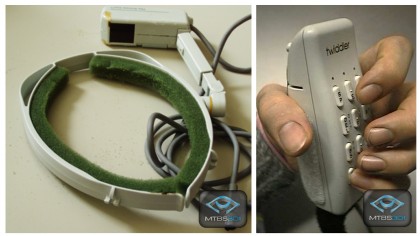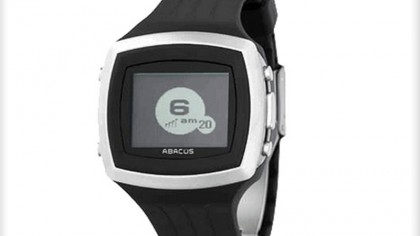The 5 rubbish wearables that actually make Google Glass look cool
Worn out wearables

The wearable tech market is set to soar this year, with Google Glass being released for one day only in the US before a general release and new smart watches popping up faster than you can say Galaxy Gear.
With more than 90,000 wearable devices predicted to ship in 2014 according to ABI Research, there seems to finally be an appetite for this new wave of products to take the power from the mobile phone and add it into new areas of the body.
But it wasn't always this way, and as much as you might hate the way that Google Glass looks, you can at least be thankful it doesn't look like some of the horror shows from the past. But like any good failure, we can't help but look again; so join us as we take a look back at some of the biggest wearable electronics failures of years gone by - and see how they influenced today's designs.
Private Eye and Twiddler keyboard

Launch date: 1989
Cost: Unknown
Reflection Technology's Private Eye head-mounted display was one of the first wearable computers, although its mobility was a little limited.
Mounted on a pair of glasses, with a 720 x 280 pixel red monochrome screen in a 8.89 x 3.81 x 3.18mm casing, the actual display measured 1.25-inches diagonally but appeared as though you were viewing a 15-inch monitor from 18-inches away.
The Private Eye's display was made up of a row of LEDs and a rapidly spinning mirror to give the illusion of lines of text and there was little you could do with it except read or write text.
Sign up for breaking news, reviews, opinion, top tech deals, and more.
The Private Eye screen was attached to a 12Mhz Intel 286 processor with 2MB of RAM and an 85MB hard drive, connected to a car mobile phone, powered by a motorbike battery and was carried around in a shoulder bag to make it a little more mobile.
Unlike Google Glass that is controlled by your voice, Private Eye was used with the Twiddler wrist keyboard for text input.
Why it should have been awesome: Being able to edit documents and do, you know, computer things on the go should have been amazing - and the twiddling finger pad must have felt brilliant to master.
Ultimate reason for failure: There wasn't a whole lot of use for the Private Eye. Although it was an alternative to a computer monitor, the equipment was heavy and not many people wanted to mount a monitor on their glasses.
MSN Direct Smartwatch

Launch date: January 2004
Cost: $200 (about £118, AU$215) + service subscription of $39.95 (about £24, AU$43) a year
The MSN Direct Smartwatch was part of Microsoft's initiative for Smart Personal Object Technology (SPOT), using FM radio signals to broadcast news, weather and other text-based information to watches.
It took a while for Microsoft to get the SPOT service up and running. When it finally was working the service cost $39.95 per year or $9.95 per month, plus tax. You also had to buy the watch itself, with options manufactured by Suunto, Fossil, Tissot and Swatch retailing for around $200 each.
As one of the first smart watches to come to market, the MSN direct Smartwatch had pretty limited capabilities. It didn't connect to your phone like the Samsung Galaxy Gear, nor did it do much else other than beam RSS feeds to your wrist.
You could get text messages sent to the device, with the service being run by MSN Messenger. However, you couldn't reply to messages, so it was hardly a solid mobile phone companion.
Why it should have been awesome: The same reason we persist with smartwatches today. Instant info on your wrist? That's the future, that is.
Ultimate reason for failure: The MSN Direct was only available in limited areas of the United States and the fact you had to pay for information you could find on the internet for free was a little pointless.